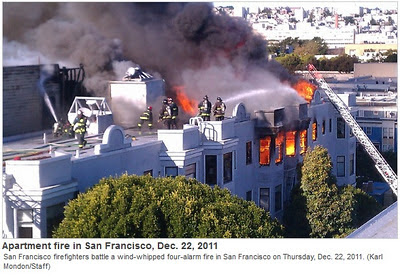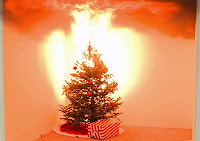As we move closer to winter and home fire deaths begin to increase, the National Fire Protection Association (NFPA) and the U.S. Fire Administration (USFA) remind everyone that fire safety and prevention are especially important in the coming months. Because home fires are more prevalent in winter than in any other season, NFPA and USFA are once again jointly sponsoring a special initiative – Put a Freeze on Winter Fires – to help raise public awareness about winter fires.
“These fires are a painful reminder of what we see every year – the temperatures drop and fires increase,” said NFPA President Jim Shannon. According to NFPA statistics, space heaters account for about one third of home heating fires and approximately 80 percent of the home heating fire deaths.
The USFA’s Winter Residential Building Fires (PDF, 1 MB) report shows that each winter an estimated 108,400 residential building fires occur in the United States, resulting in 945 deaths, 3,825 injuries, and $1.7 billion in property loss. Cooking is the leading cause of winter residential building fires at 36 percent followed by heating at 23 percent. Winter residential building fires occur mainly in the early evening hours, peaking from 5 p.m. to 8 p.m.
“The winter season brings the highest number of home fires, more than at any other time of year,” said USFA’s Deputy Fire Administrator Glenn Gaines. “Home fires increase in part due to cooking and heating. Winter storms can also interrupt electrical service and cause people to turn to alternative heating sources that contribute to the increased risk of fire during the winter months.”
The NFPA and USFA recommend following these safety tips to prevent winter home fires:
- Stay in the kitchen when you are frying, grilling, or broiling food. If you leave the kitchen for even a short period, turn off the stove.
- Space heaters need space; keep anything that can burn at least three feet away from each heater.
- Check electrical cords often and replace cracked or damaged electrical or extension cords. Do not try to repair them.
- Never use your oven or stovetop to heat your home. They are not designed for this purpose and can be a fire hazard. In addition, carbon monoxide (CO) gas might kill people and pets.
- Do not put your live Christmas tree up too early or leave it up for longer than two weeks. Keep the tree stand filled with water at all times.
- Avoid using lighted candles. If you must use candles, place them in sturdy candleholders that won’t burn.
- If you smoke, use only fire-safe cigarettes and smoke outside.
“Winter fires are preventable,” Gaines emphasized. “Everyone should find out what they need to know to prevent a tragedy and have a safe winter season.”
For more information about the causes of winter fires, winter storm fire safety, holiday fire safety, and tips that will help prevent the incidence of fire in the home, visit the USFA website at www.usfa.fema.gov/winter and the NFPA website at www.nfpa.org/winter.
About the U.S. Fire Administration (USFA) As an entity of the Department of Homeland Security's Federal Emergency Management Agency, the mission of the USFA is to provide national leadership to foster a solid foundation for our fire and emergency services stakeholders in prevention, preparedness, and response.
About the National Fire Protection Association (NFPA) NFPA is a worldwide leader in fire, electrical, building, and life safety. The mission of the international nonprofit organization founded in 1896 is to reduce the worldwide burden of fire and other hazards on the quality of life by providing and advocating consensus codes and standards, research, training, and education.
(The usual disclaimers: I am not a journalist; This is a blog that expresses an outlook and is not conclusive in any shape or manner.)











